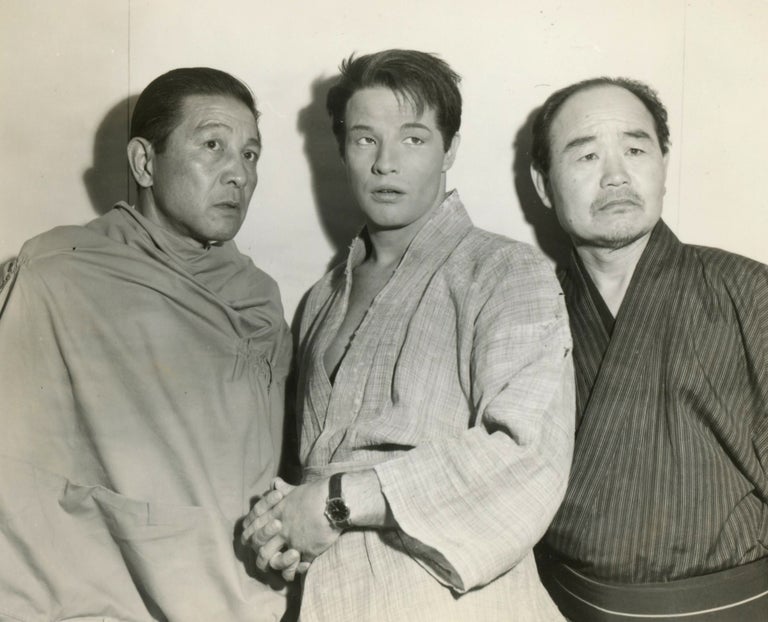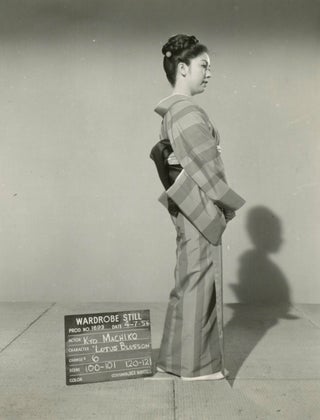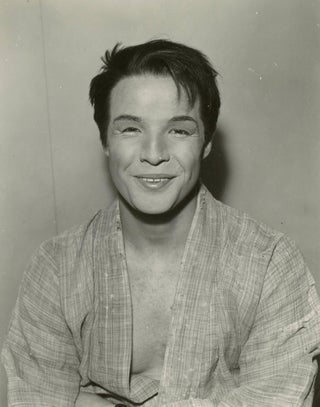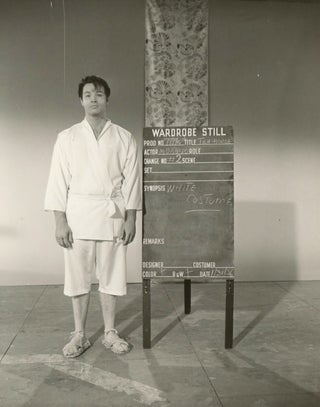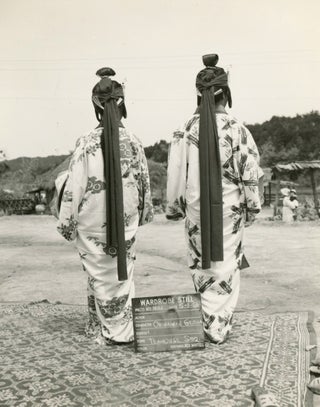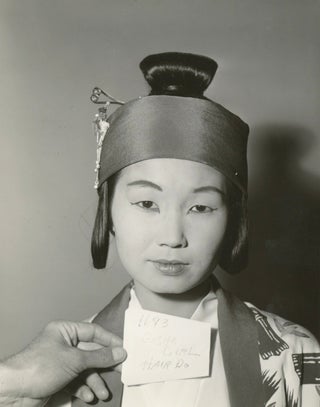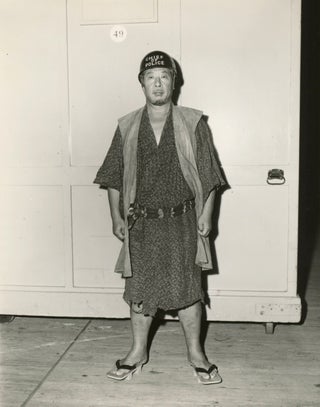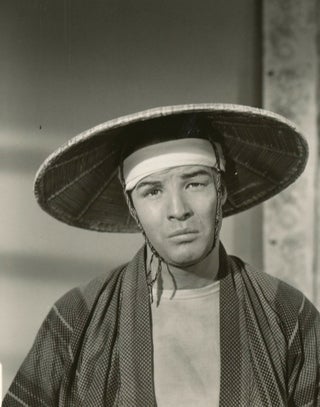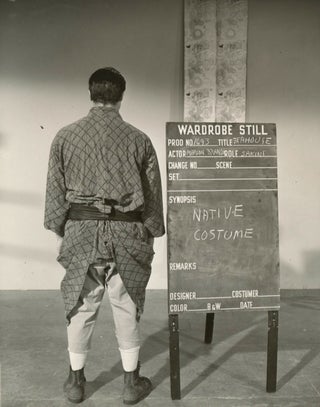An Archive of 676 Photographs of Marlon Brando and Others from the Film Teahouse of the August Moon, many Showing Costume Studies of Brando, Machiko Kyo, and Others in Japanese Dress, 1956.
Nara Prefecture: MGM Studios, 1956. First. Silver gelatin contact prints, measuring 5 x 4 inches. Minimal wear, fine condition overall. Fine. Item #List1014
The legacy of Daniel Mann’s 1956 film Teahouse of the August Moon, which tells the story of a misfit American captain’s attempts to Americanize the village of Tobiki on Okinawa, is deeply problematic at best. While some scholars have pointed to this film, along with Japanese War Bride (1952) and the Brando film Sayonara (1957) as being the first to openly portray and discuss interracial marriage, others have argued that the film is part of a lineage of racial stereotyping and “yellowface” casting, with Asianweek, for example, calling Brando’s performance - as the Japanese interpreter Sakini - number 9 in its list of Infamous Yellowface performances, and the critic Michael Medved awarding a Golden Turkey award for the most Ludicrous Racial Portrayal of All Time. The film features three Japanese stars: Nijiko Kiyokawa (Higa Jiga), Jun Negami (Seiko), and Machiko Kyo (Lotus Blossom). The character of Lotus Blossom, a young geisha played by Mahiko Kyo, has been described by some as furthering several stereotypes of Japanese women, though the film’s popularity in Japan at the time and the presence of Japanese dialogue in the background has also been the focus of some recent scholarship suggesting that Lotus Blossom is a more complex character than is immediately apparent to western audiences.
Scholars seeking a visual record of the film - and in particular the juxtaposition of Brando and his character, as well as Glen Ford, with the Japanese actors in the film - would likely find none more exhaustive than this, a nearly 700 piece photographic production archive from the film. Interestingly, the film was shot on location at Nara Prefecture, and, and art direction was done by Japanese crew members. The bulk of the photographs consist of wardrobe stills showing Brando and others in Japanese costume. Many of the photographs are nearly identical, with slight costume variation. Marks to the versos in pencil suggest that this set may have been used editorially, to decide which variations would make it into the film. Brando and Kyo’s characters get the most attention, with their costumes (and Kyo’s hairstyles) presented in microvariation. Other characters, with titles such as “Girl on Jeep,” are shown in less detail. Extras are shown in groups. Brando’s makeup took at least two hours per day, according to those who worked on the film.
Overall the group provides a broad visual record of one of the more important films of the postwar period.
Price: $2,500.00



